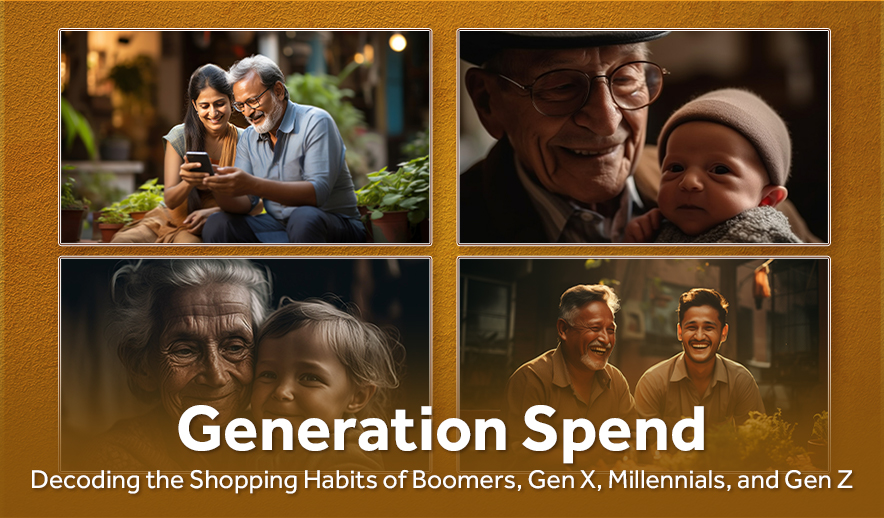The way we shop tells a story about who we are, and that story differs dramatically across generations. From Baby Boomers who witnessed the rise of consumerism to Gen Z prioritizing sustainability and experiences, each generation leaves its unique mark on the shopping landscape. Let’s dive into the spending habits of these four major generations:
1. Baby Boomers (between 1946 and 1964): The Brand Loyalists:
- Value: Quality, durability, and brand recognition. Boomers grew up with strong brand loyalty, believing in the “buy it once, buy it right” mentality. They prioritize established brands with a proven track record and invest in items built to last.
- Shopping Habits: Physical stores remain their preferred domain, valuing the personal touch and expert advice of salespeople. While they’re embracing online shopping, caution and research are key.
- What they buy: Home improvement, high-quality appliances, travel experiences, and luxury goods.
2. Gen X (between 1965 and 1980): The Pragmatic Penny Pinchers:
- Value: Practicality, value for money, and avoiding debt. Gen X witnessed economic uncertainty and prioritize responsible spending. They seek deals and discounts, preferring functionality over flashy branding.
- Shopping Habits: A mix of online and physical stores, valuing convenience and price comparisons. They’re comfortable with research and comparison shopping before making a purchase.
- What they buy: Durable everyday items, tools and gadgets, practical clothing, and experiences with value, like camping trips or outdoor adventures.
3. Millennials (between 1981 and 1996): The Experience Seekers:
- Value: Experiences, personal connections, and social responsibility. Millennials prioritize experiences over material possessions, seeking adventure, self-expression, and community. They’re also more conscious of ethical sourcing and sustainability.
- Shopping Habits: Primarily online, drawn to user reviews, social media recommendations, and personalized experiences. They value convenience and fast shipping.
- What they buy: Travel, dining out, entertainment, fitness and wellness experiences, and ethically sourced or sustainable products.
4. Gen Z (mid-to-late 1990s ): The Digital Natives:
- Value: Authenticity, individuality, and social impact. Gen Z is highly connected and values brands that align with their social and environmental values. They prioritize authenticity and self-expression over trends, seeking unique and personalized experiences.
- Shopping Habits: Almost exclusively online, relying heavily on social media recommendations, influencer endorsements, and peer reviews. They’re comfortable with secondhand shopping and upcycling.
- What they buy: Sustainable fashion, secondhand clothing, technology, experiences with social impact, and products that promote individuality and self-expression.
These are just broad strokes, and individual preferences within each generation can vary greatly. However, understanding these general trends can help marketers and businesses tailor their offerings and communication to resonate with different age groups.










